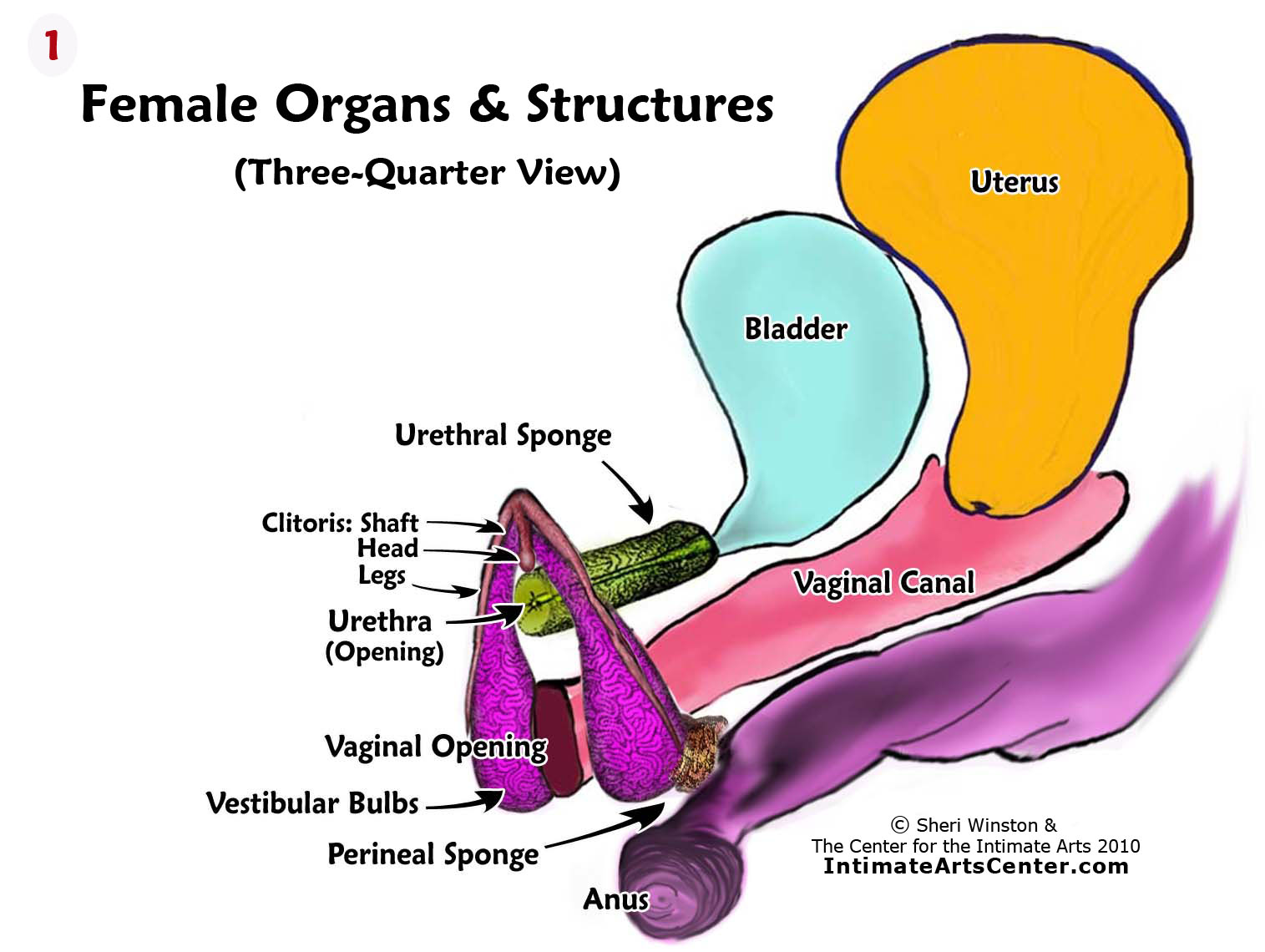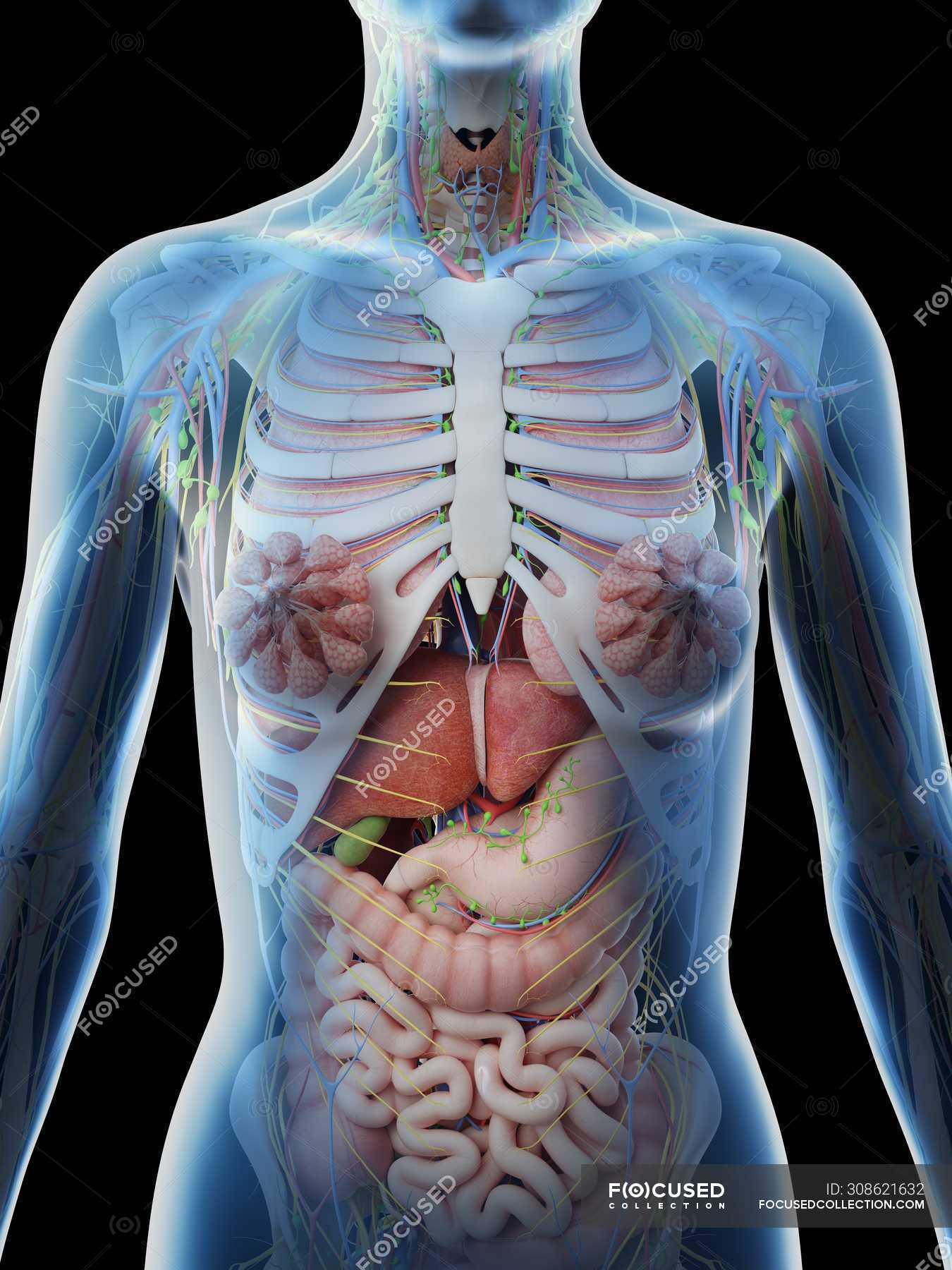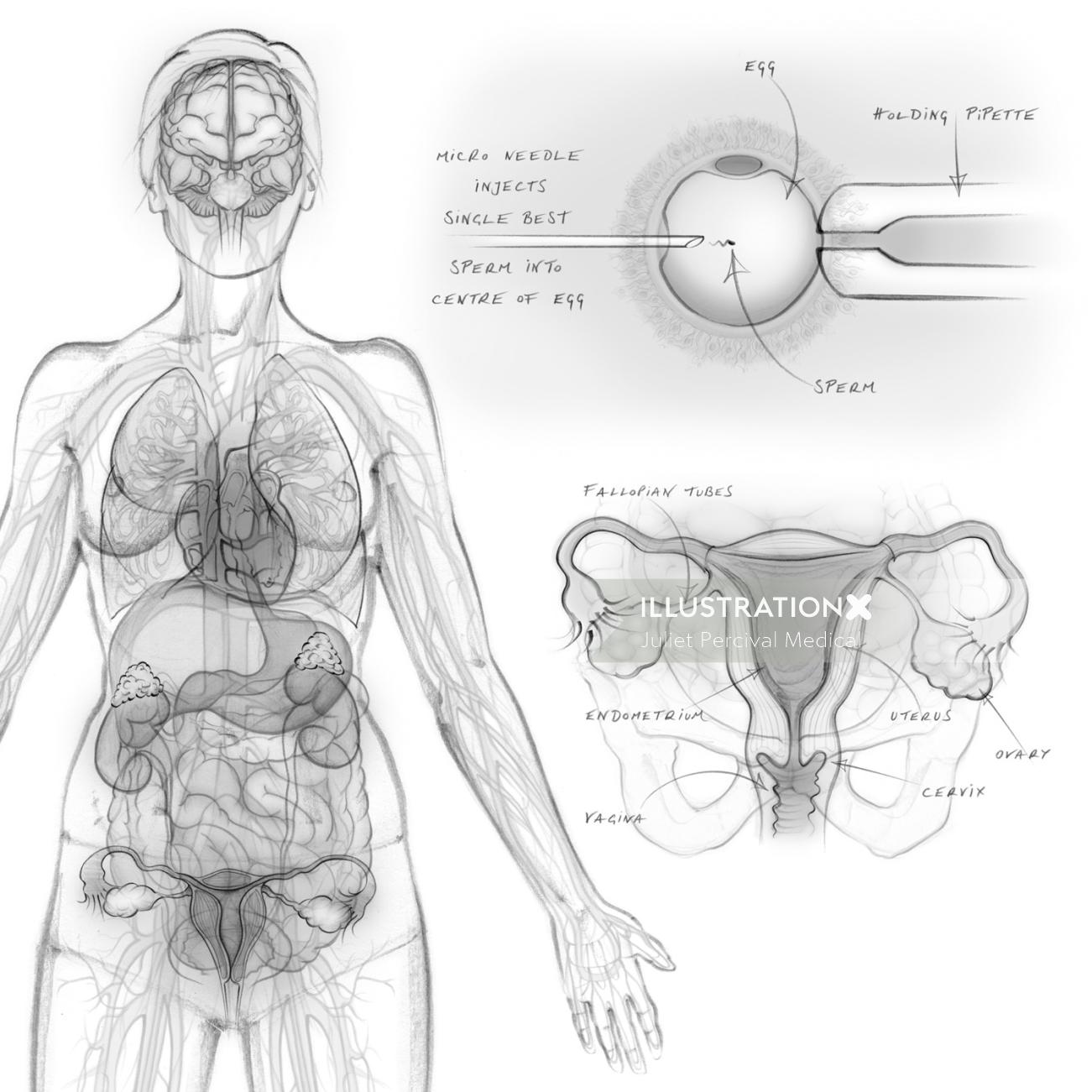Understanding A Woman With Two Organs: Insights Into Unique Anatomy
Have you ever heard the phrase "woman with two organs" and wondered what it really means? It's a phrase that, you know, can spark a lot of curiosity and perhaps even a bit of confusion. Our bodies are truly amazing, and sometimes, they present us with unique variations that are worth exploring. This particular idea often points to some fascinating aspects of female anatomy, which are actually more common than many people might realize, in a way.
Typically, a woman, as defined by "My text," is an adult female person. She usually inherits a pair of X chromosomes, one from each parent, and women with functional uteruses are capable of pregnancy and giving birth, more or less, from puberty until menopause. This general understanding forms the very foundation of what it means to be a woman, encompassing both biological and social aspects, too it's almost.
So, when we talk about a "woman with two organs," we're often looking at specific anatomical variations, particularly within the reproductive system. This article aims to shed some light on what these variations might involve, how they come about, and what they mean for the individuals who have them. We will, you know, look at the science and the human experience, giving you a clearer picture of this rather unique aspect of female biology.
Table of Contents
- What Does "Woman" Mean, Actually?
- Exploring the Idea of "Two Organs" in a Woman's Body
- How These Variations Are Discovered and Understood
- Living with Unique Anatomy: Everyday Realities
- Common Questions About Unique Female Anatomy
- Looking Ahead: Support and Knowledge
- A Final Thought
What Does "Woman" Mean, Actually?
To really get a good grip on "woman with two organs," it helps to first revisit what the term "woman" means, as a matter of fact. According to "My text," a woman is an adult female human being. This definition is pretty universal, covering biological, social, and cultural dimensions. Women are typically of the female sex, inheriting those X chromosomes, which is a pretty fundamental part of their biological makeup, you know.
A key aspect highlighted in "My text" is the biological capacity for bearing offspring. Women with functional uteruses are, essentially, capable of pregnancy and giving birth. This capacity starts around puberty and continues until the menopause, which usually begins in the late forties and ends in the early fifties. Between these ages, women experience a menstrual cycle about once a month, which is quite a regular thing, actually.
So, the word "woman" is a fundamental term in the English language, you know, encompassing this biological reality. It's used universally to identify adult human females. This basic understanding is quite important when we start talking about variations in anatomy, as it gives us a baseline for what is typically expected, so to speak.
Exploring the Idea of "Two Organs" in a Woman's Body
When someone mentions a "woman with two organs," they're often referring to a specific anatomical variation, particularly in the reproductive system. It's not about having, say, an extra heart or something like that, but rather a duplication of an organ that usually appears singly, or a distinct separation of structures that typically merge, you know. This can be a really interesting area of human biology, honestly.
These variations are not, you know, some kind of sci-fi scenario. They are real, though relatively rare, conditions that arise during development. Understanding them helps us appreciate the wide spectrum of human anatomy. It also highlights the body's incredible ability to function, even with these unique setups, which is pretty amazing, really.
The phrase "two organs" can, in some cases, simply mean having two of a naturally paired organ, like two kidneys or two ovaries. However, in the context of discussions about women's unique biology, it most often points to a duplication of the uterus, which is a significant organ for reproduction, as "My text" points out. This is a topic that, you know, can spark a lot of questions.
The Reproductive System: A Closer Look
Let's take a moment to look at the female reproductive system. It includes the ovaries, fallopian tubes, uterus, cervix, and vagina. The uterus, as "My text" emphasizes, is where a pregnancy develops. It's usually a single, pear-shaped organ located in the pelvis. The ovaries, on the other hand, are naturally paired organs, one on each side, which produce eggs, you know, and hormones, too it's almost.
During fetal development, the uterus forms from two small tubes called Müllerian ducts. These ducts usually fuse together to create one single uterus. However, sometimes, this fusion doesn't happen completely, or it doesn't happen at all. When this occurs, it can lead to various anatomical differences, which is a pretty fascinating part of embryology, in a way.
These developmental variations are what often lead to the discussion of a "woman with two organs," especially when we're talking about the uterus. It's a situation where the typical formation process takes a slightly different path, resulting in a unique structure. This is, you know, a natural occurrence, not something that happens because of external factors.
When Organs Come in Pairs: Uterus Didelphys
One of the most well-known examples of a "woman with two organs" in the reproductive sense is a condition called uterus didelphys. This means a woman has two separate uteruses, each with its own cervix, and sometimes even two vaginas. It's a result of those Müllerian ducts failing to fuse together during development, as I was saying, which is quite distinct, actually.
Each of these uteruses can, in theory, support a pregnancy. This means a woman with uterus didelphys could potentially become pregnant in one uterus, or even in both at the same time, though that's extremely rare. It's a condition that, you know, truly highlights the body's remarkable adaptability and its capacity for life, even with such a unique setup, you know.
Having two uteruses can present unique challenges, but many women with this condition live full, healthy lives. They can experience regular menstrual cycles, just like other women, but they might have two separate periods, one from each uterus, which is pretty interesting. Understanding this specific condition helps clarify what "woman with two organs" often refers to, and it's something that, you know, medical professionals are quite familiar with.
Other Paired Organs and Variations
While uterus didelphys is a primary example, it's worth remembering that the human body has many paired organs. We have two kidneys, two lungs, two ovaries, and so on. The phrase "woman with two organs" could, in a broader sense, refer to any situation where a typically single organ is duplicated, or where a paired organ has some kind of unusual variation, for instance.
However, when the discussion focuses on the term "woman" and her unique biological capabilities, especially those related to pregnancy and giving birth, the conversation almost always points back to the reproductive system. This is because the uterus is so central to the definition of a woman's biological function, as "My text" explains. It's a pretty clear connection, you know.
Other variations can exist, such as a bicornuate uterus, where the uterus is heart-shaped with two horns, or a septate uterus, which has a wall or septum dividing it. These are not quite "two organs" in the same way as uterus didelphys, but they are still significant anatomical differences that can affect a woman's reproductive journey. They're all part of the fascinating diversity of human anatomy, and they show how, you know, bodies can be quite different.
How These Variations Are Discovered and Understood
Discovering that one has a unique anatomical variation like uterus didelphys often happens during a routine gynecological exam, or perhaps when a woman is experiencing symptoms like unusual menstrual bleeding, pelvic pain, or difficulties with pregnancy. Imaging tests, such as ultrasounds, MRIs, or hysteroscopies, are typically used to get a clear picture of the internal anatomy, you know. This is how doctors really figure things out.
Once a diagnosis is made, medical professionals can explain what the specific variation means for that individual. They can discuss any potential implications for reproductive health, such as the likelihood of a successful pregnancy or the need for special care during childbirth. It's a process that, you know, involves careful examination and clear communication, which is pretty important.
It's important to remember that having such a variation doesn't mean a woman is "abnormal" or "less than." It simply means her body developed in a unique way. Many women with these conditions live perfectly healthy and fulfilling lives, and with proper medical care, they can often achieve their reproductive goals, too it's almost. The key is knowledge and understanding, you know, for everyone involved.
Living with Unique Anatomy: Everyday Realities
For women with unique anatomical variations, like a double uterus, everyday life can be quite similar to that of other women. They experience menstrual cycles, as "My text" describes, though they might have two separate ones, which is pretty unique. They also navigate the same life stages, from puberty through to menopause, which is usually in the late forties to early fifties, you know.
However, there can be specific considerations. For instance, if a woman with uterus didelphys becomes pregnant, the pregnancy might be carried in one of the uteruses. There can be a slightly higher risk of certain complications, such as premature birth or a baby presenting in a breech position. This is why, you know, close medical supervision is often recommended, as a matter of fact.
Despite these potential challenges, many women with these variations have successful pregnancies and deliveries. Medical advancements and a better understanding of these conditions mean that doctors can provide tailored support. It's about empowering women with information and care, allowing them to lead their lives fully, which is, you know, what everyone wants, basically.
Support groups and online communities can also be incredibly helpful for women living with unique anatomy. Connecting with others who share similar experiences can provide emotional support, practical advice, and a sense of belonging. It's a way to, you know, share stories and learn from each other, which is really valuable, honestly.
Common Questions About Unique Female Anatomy
Can a woman with two uteruses have two separate menstrual periods?
Yes, absolutely. A woman with uterus didelphys, for instance, has two distinct uteruses, each with its own lining that sheds during menstruation. This means she can experience two separate menstrual cycles, with bleeding occurring from each uterus, sometimes at different times. It's a pretty clear example of how unique anatomy can affect daily biological processes, you know.
Is it possible for a woman with two uteruses to be pregnant in both at the same time?
While extremely rare, it is indeed biologically possible for a woman with two uteruses to become pregnant in both at the same time. This would involve two separate fertilizations, one in each uterus. Cases like this have been documented, and they are, you know, quite remarkable, highlighting the incredible possibilities of human reproduction, in a way.
Do women with these variations face more health problems?
Not necessarily. Many women with anatomical variations like uterus didelphys live completely healthy lives without any significant health problems outside of potential reproductive challenges. The main considerations often revolve around pregnancy and childbirth, as mentioned earlier. Regular medical check-ups and understanding one's unique anatomy are key to managing any potential issues, which is pretty standard, you know. For more detailed medical information, you might find it helpful to look at resources from reputable health organizations, like this one: a well-known medical resource.
Looking Ahead: Support and Knowledge
The journey of understanding one's own body, especially when it presents with unique anatomical features, is a personal one. For a woman with two organs, or any other anatomical variation, knowledge is truly empowering. Knowing what to expect, what questions to ask, and where to find support makes a big difference, you know. It's about being prepared, more or less.
Medical professionals are continually learning more about these conditions, and treatments and management strategies are always improving. This means that women with unique anatomies can receive better care and support than ever before. It's a really positive development, honestly, for so many people.
If you're curious to learn more about female reproductive health on our site, there's plenty of information available. You can also explore this specific page for deeper insights into related topics. Staying informed is, you know, always a good idea when it comes to personal well-being, as a matter of fact.
A Final Thought
The concept of a "woman with two organs" really opens up a conversation about the incredible diversity of human biology. It reminds us that while there's a typical definition of what it means to be a woman, with her X chromosomes and capacity for pregnancy, as "My text" explains, there's also a wide range of natural variations. These differences are part of what makes each person unique, and they are, you know, something to be understood and appreciated.
Embracing this understanding helps us foster a more inclusive view of health and anatomy. It’s about recognizing that every body is wonderfully complex and deserving of care and respect. So, the next time you hear about such a unique anatomical feature, remember that it's a testament to the diverse and amazing ways human bodies can be, which is pretty cool, really.

Woman Anatomy Diagram

Body Anatomy Woman Organs at Alison Brett blog

Diagram Of Woman's Internal Organs Reproductive System Diagr